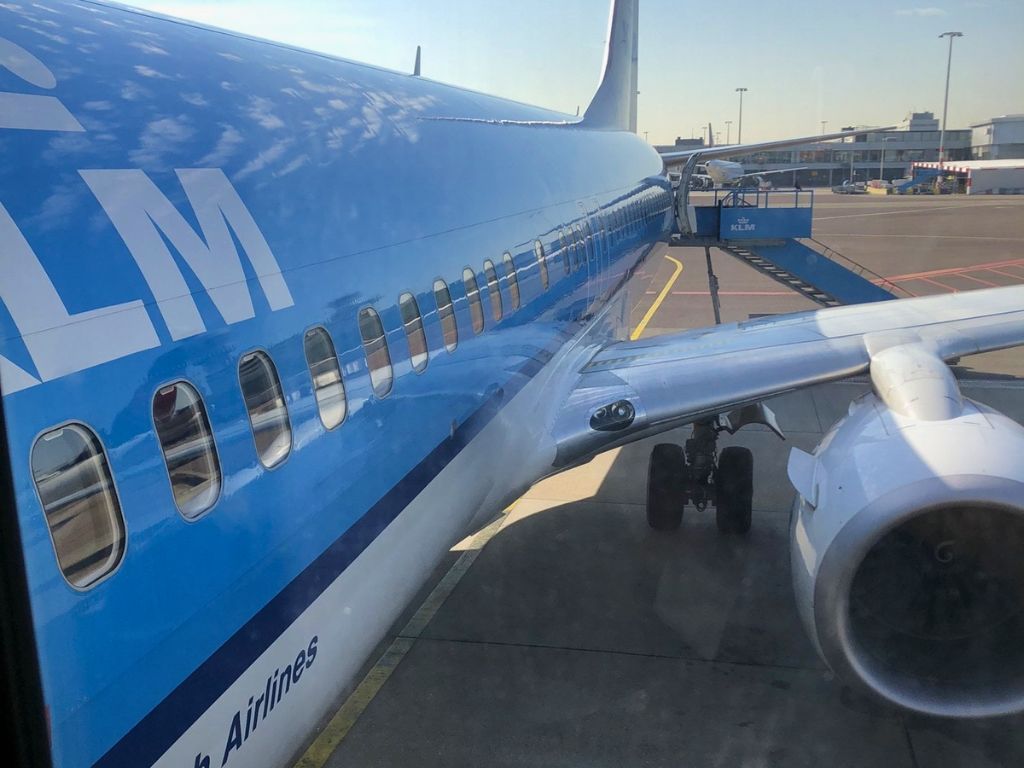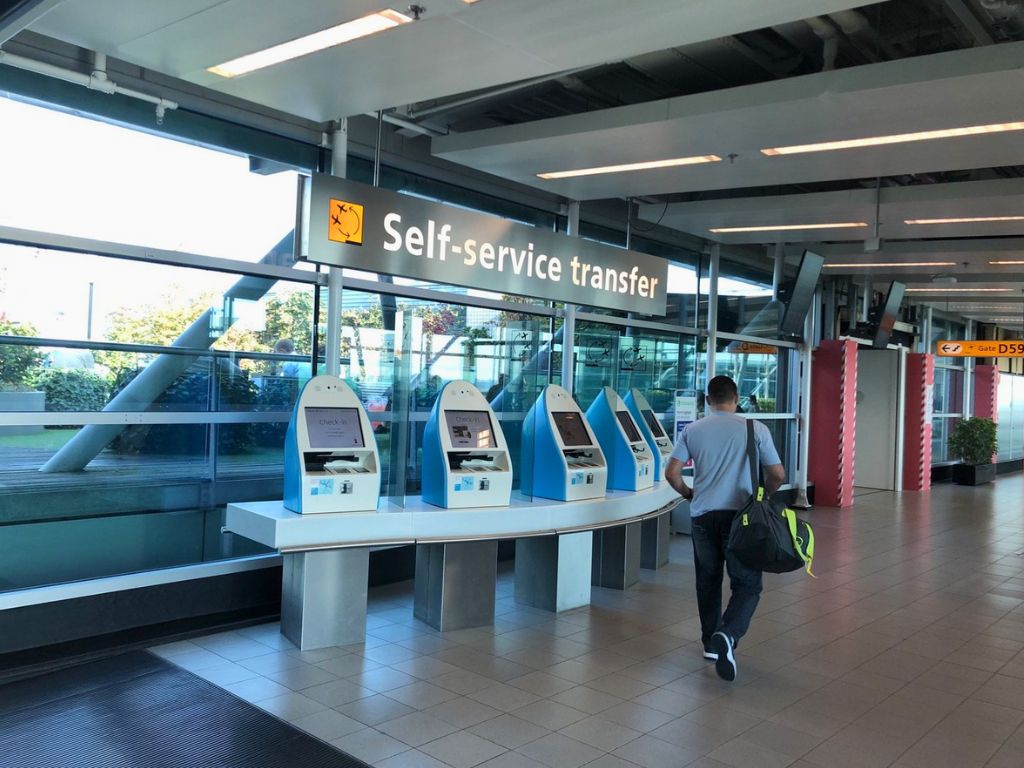Traveling to go on adventures all over the world means as a team, we’ve taken a lot of long flights over the years. All this experience means we now have the art of preparing for these flights spot-on. Whether it’s choosing an aisle seat or a window seat, deciding whether paying for extra leg room is worth it or planning what to do on the plane in advance, read on for the essential tips for long flights our team of seasoned travelers has to share with you.

Pre-Flight Preparation
When it comes to long-haul flights, preparation starts well before you reach the airport.
For both long and short flights, booking early gives you a better shot at choosing your preferred seat on the plane, whether that’s a window seat for uninterrupted views and wall-leaning naps, or an aisle seat for easier access to the bathroom during a long flight. Whichever you choose, seat selection makes a big difference when you’re spending several hours in the air.
Try to get a good night’s sleep before flying, and arrive early at the airport, not just to clear security without stress, but to take advantage of what the terminal has to offer. Many passengers head straight to the airport lounge, where you can find comfortable seating, quiet zones, and even showers – ideal for freshening up before international flights.
Before your next long-haul flight, spend a little time checking the airline’s in-flight entertainment system, and download any extra content you might want (movies, audiobooks, podcasts, or games) to your own devices. Not every plane has great in-flight entertainment, and you’ll appreciate having options if you aren’t able to sleep and the screens are glitchy or limited.
Lastly, pack a few non-negotiables for long-haul flights: a travel pillow for sleep, an eye mask, noise-canceling headphones, and a water bottle are among the essentials. These help create a quiet, dark environment on the plane, even when the cabin isn’t cooperating, making it easier to fall asleep and stay relaxed during extended flights.
Health and Wellness
On flights of six or more hours, it’s important to try to stay healthy. Long periods of sitting on a plane can affect circulation and lead to discomfort, especially on long-haul journeys. Wearing comfortable, loose clothing and compression socks can improve blood flow and reduce swelling, particularly around your ankles and feet.
Stay hydrated throughout the flight. Cabin air has low humidity, so you might be losing moisture faster than you think. Bring your own water bottle onto the plane and ask flight attendants to refill it, rather than relying on those tiny plastic cups. Avoiding alcohol is also a good idea. While it may help you relax in the short term, it increases dehydration and disrupts sleep, making jet lag worse when crossing time zones.
Airline food isn’t always the best on long-haul flights, so it doesn’t hurt to bring your own food on your next flight; something you know you’ll actually want to eat. A sandwich, some dried fruit, or whatever you usually reach for on a long day can make the flight easier. It’s not about packing a full meal; just having some of your own food on hand so you’re not stuck waiting on the trolley or eating something that doesn’t sit right.
As for medication, a small kit with painkillers, allergy relief, or motion sickness remedies is smart to have on hand. Hopefully, you won’t need it, but it’s better to be prepared than uncomfortable mid-flight.

In-Flight Comfort
Getting comfortable on a long-haul flight isn’t just about where you sit; it’s about how you sit, what you wear, and how you manage your space. If possible, choose a seat with extra legroom. These are often found near emergency exits or at the front of economy class sections. If you’re in first class, that’s a different story, you’ll already have all the space you need to sleep, relax, and get comfortable.
Wherever you sit, adjust your seat belt early so it rests comfortably over your hips. Just make sure the flight attendants can see it easily if you go to sleep, as they’ll need to check it’s fastened when the sign is illuminated. Loosen waistbands, remove shoes if you’ve brought clean socks or slippers, and try to create a space where you can rest on a multi-hour flight without feeling cramped, while being respectful of fellow passengers, of course.
One of our favorite tips for long flights? Bring layers in your carry-on. A lightweight travel blanket, large scarf, or sweater that fits over your t-shirt gives you flexibility in fluctuating cabin temperatures. Cabins often get cold, especially on an overnight flight.
To block out cabin lights and noise on long flights, use an eye mask and noise-canceling headphones or simple foam earplugs. You can’t force sleep, but creating a calmer environment, even if you’re not sleeping, can help you relax and pass the time more comfortably.
And don’t forget to get up from your seat every few hours. A short walk down the aisle or a quick standing stretch can help with stiffness and circulation.
Staying Entertained and Productive
When flying long haul, it’s tempting to rely entirely on the airline’s entertainment if you’re not planning to get any sleep, but that can be a gamble. We always suggest downloading your own materials––movies, TV shows, books, audio books, podcasts––before you leave home. That way, you’re not dependent on a glitchy system.
Bringing a portable charger and universal power adapter ensures your own devices stay powered for the full journey, particularly if you’re using a tablet or phone for work or entertainment. We’ve encountered our fair share of faulty seat power outlets so have learned not to rely on them.
Some flights offer onboard Wi-Fi (usually for an extra cost), but it’s best to download everything in advance in case this internet connection is slow or unavailable.
We often use long flights as a chance to do things we rarely make time for, like reading a full novel, editing photos, journaling, or even doing some extra planning for the upcoming adventure. If you’re working, plan short bursts of productivity followed by breaks.

Pack a travel organizer to keep essentials like charging cables, headphones, hand wipes, and medication within easy reach. Digging through your carry-on mid-flight can be frustrating, especially when you’re squeezed between other passengers.
Arrival and Time Management
How you manage your time in the air can impact how you feel once you land, especially when crossing multiple time zones. One of our top tips is to set your watch to the local time of your destination as soon as you board. This helps you mentally shift into the right rhythm, making jet lag slightly less jarring.
If you have any control over arrival times, choose evening over morning. Arriving late in the day allows you to eat, take a short walk, and go to sleep, rather than forcing yourself to stay awake through a full, exhausting day.
For long layovers or early arrivals, it’s worth booking access to a lounge or hotel room where you can rest, shower, grab some food, and recharge before heading out. Some lounges and airports even offer nap pods or day rooms with beds. These can be particularly helpful after long-haul flights.
What to Do When You Land
Give yourself more time than you think you need between flights. If you’re connecting, you might have to wait in long immigration lines filled with passengers, collect your bags, and check them again with desk staff. You may need to switch terminals entirely, and these things always take longer when you’re tired. Arriving a little early and having a rest before boarding is always better than having to scramble to get to the gate on time.

It also helps to look up how you’ll get from the airport to where you’re staying. Whether that’s a train, a taxi, or a shuttle, having even a rough idea ahead of time can make arrival feel a lot less overwhelming, especially when you’re landing in a new time zone and just want to get settled.
Air Travel Tips
Whether it’s your first time flying overseas or something you’ve done a dozen times, the basics of surviving long-haul flights don’t really change. We find that being prepared, keeping your cool, and packing sensibly go a long way.
When it comes to the flight itself, it helps to be friendly with the crew. Flight attendants deal with a lot. Being polite makes their job easier, and it can make your flight smoother too. They often have small tips for flying or workarounds that aren’t written down anywhere, but make a real difference when you need them.
Make use of airport facilities to grab some rest when you can. Many larger terminals offer showers, workspaces, spas, and quiet zones – sometimes for free, sometimes through lounge access, and sometimes for a fee. Even basic things like sitting down for a proper meal or walking a few extra steps before boarding can help reset your energy.
Keep tabs on your flight status using an airline app or a reliable flight tracker. If there’s a delay or gate change, you’ll know about it before it’s announced. Travel insurance can also save the day if your bags go missing, flights are canceled, or something interrupts your trip.
When packing, make the most of your carry-on allowance. Bring essentials like medications, a change of clothes, and valuables – anything you can’t afford to lose or be without for a day or two. We also wear our bulkiest shoes or jackets when boarding the plane to free up space in our luggage.

Final Checks
One of our essential tips for long flights is that before you leave, run through a quick final checklist. Start with the weather forecast for your destination. If there’s rain, a small umbrella or waterproof jacket can be a trip-saver. Cold temps? Pack a warm layer or wear one on the airplane. Sun in the forecast? Don’t forget sunscreen, even for a city break.
Confirm that you have all required documents for your next long-haul flight: passport, visa, and travel insurance. Have digital backups stored on your phone or email.
Double-check that your portable power bank is charged and that you’ve packed a universal power adapter. Some older airports or international hotel rooms don’t support standard plugs, which makes keeping devices charged a bit trickier.
Most importantly, go into your trip with a mindset that allows for flexibility. Delays, gate changes, crying children… it’s all part of the experience. Being mentally prepared for flying is just as important as bringing the right long-flight essentials.
Taking care of yourself before and during a long-haul flight doesn’t guarantee perfection, but it does make the whole journey more manageable and far more pleasant.
Looking for more travel tips? Check out our other blog posts and Sarah’s YouTube channel, where you’ll find lots more suggestions and advice.






